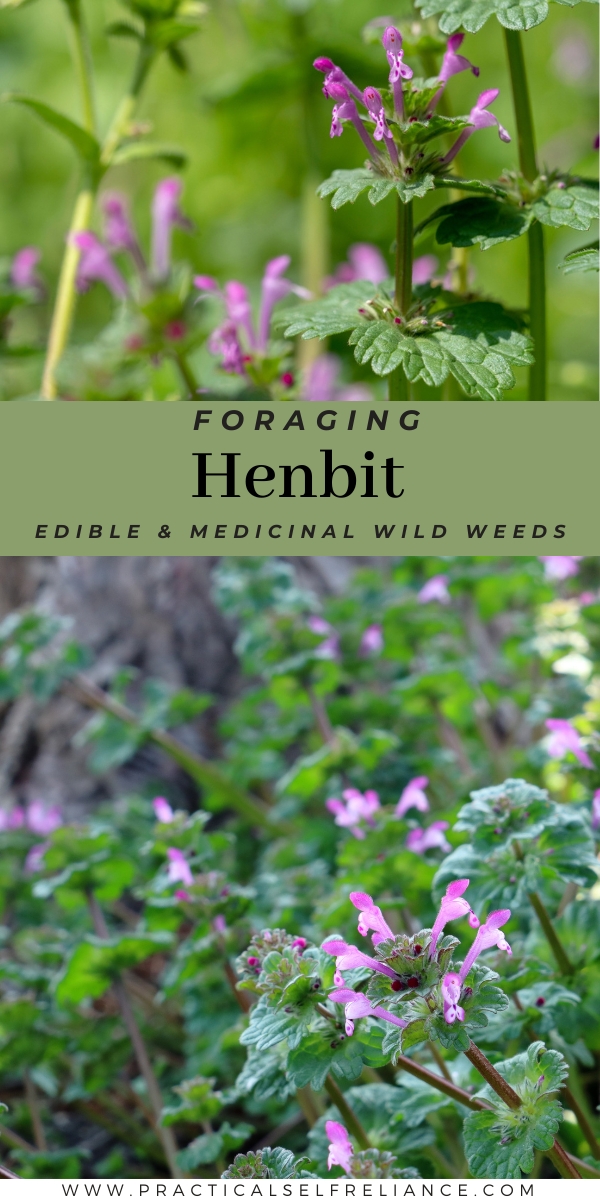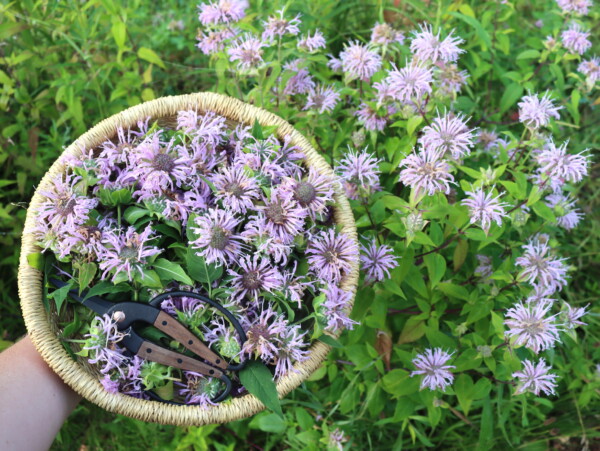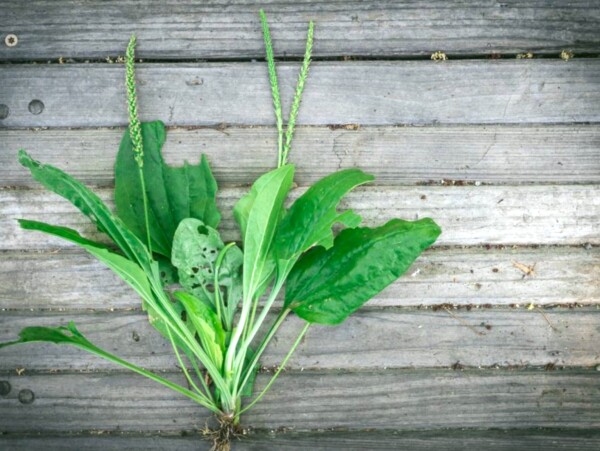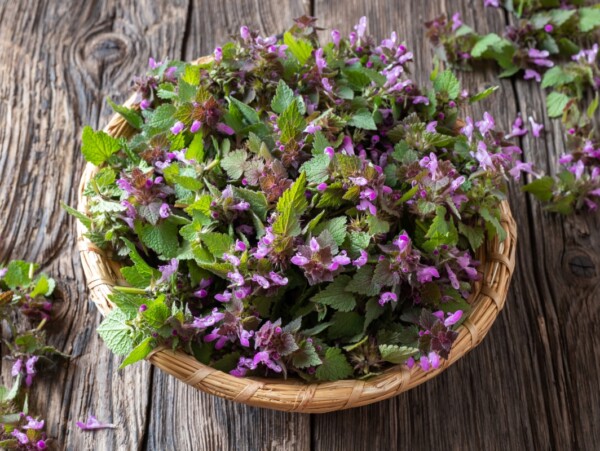Affiliate disclosure: This post may contain affiliate links. Please see our Privacy Policy.
Henbit (Lamium amplexicaule) is a common edible wild weed that’s easy to find, and just as easy to identify.

What is Henbit?
Also known as Common Henbit, Greater Henbit, Henbit Deadnettle, Deadnettle, or Fairy Horns, Henbit is a herbaceous annual weed in the Lamiaceae or Mint family.
Henbit is native to the Mediterranean region but has spread nearly worldwide. Today, it’s widely naturalized in eastern North America.
Is Henbit Edible?
The entire Henbit plant is edible. You can eat the leaves, shoots, flowers, and seeds raw or cooked. Aside from eating the plant, herbalists also use Henbit medicinally, typically as tea, though you can also use it topically.
While Henbit is healthy, overeating it or consuming large amounts of Henbit tea may have a mild laxative effect. Herbalists also believe Henbit may have some impact on menstrual issues. Therefore, if you’re pregnant or planning to become pregnant, you may want to consult your physician before consuming Henbit.
Henbit is also a great friend for beekeepers to have around. Honeybees love Henbit for its early-season nectar and flowers.
Henbit can cause mild neurological problems in horses, cattle, sheep, and other ruminants. However, the condition is rare and reversible. Some believe that the name Henbit indicates that chickens enjoy this plant. However, it is more likely that the name Henbit refers to the scalloped leaves that look like they’ve been pecked.
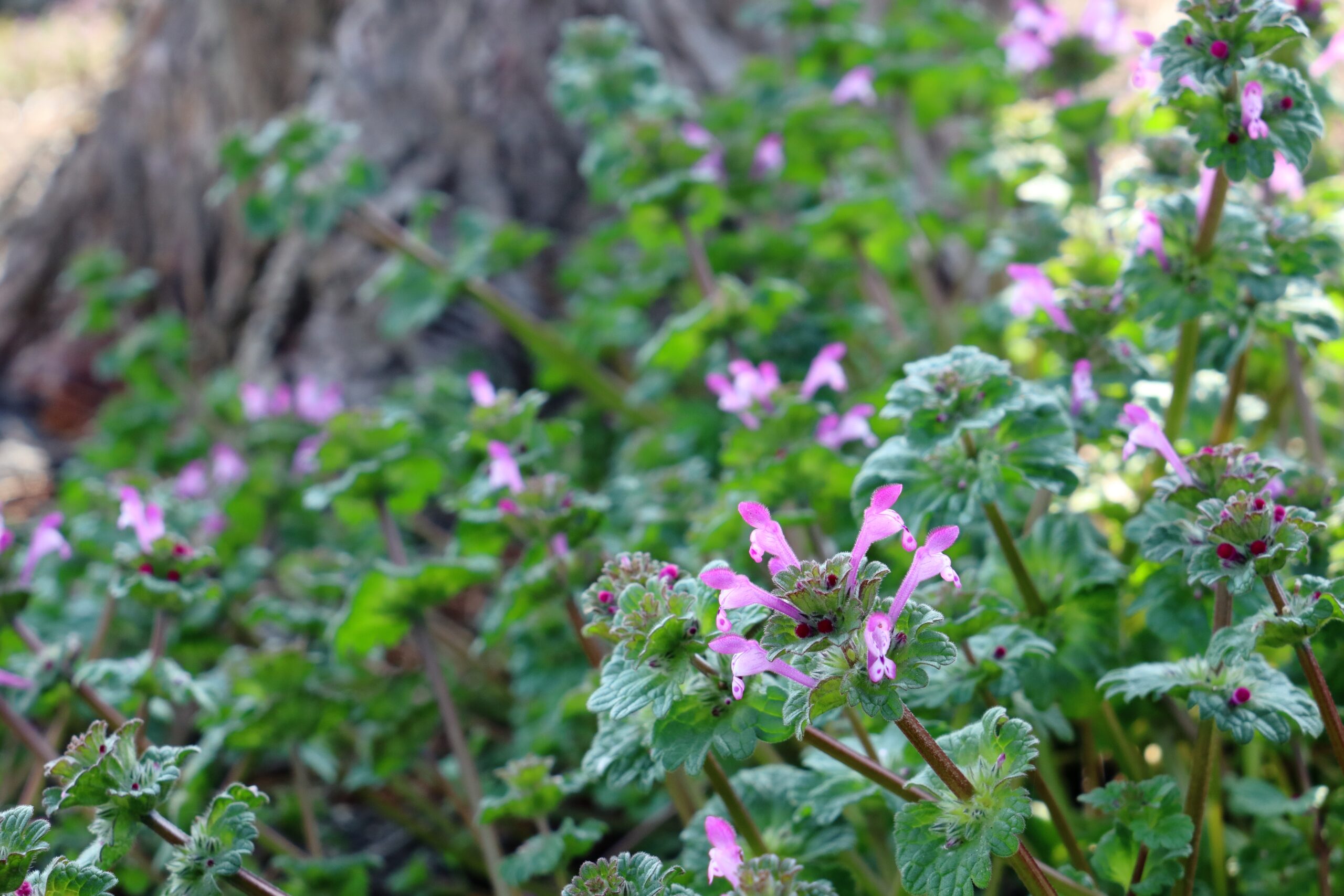
Henbit Medicinal Benefits
One of the best ways to reap this beautiful plant’s benefits is to eat it. Henbit is high in iron, magnesium, manganese, calcium, fiber, and vitamins A, C, E, and K. It’s also full of antioxidants and phytochemicals that help keep your immune system strong.
As with many plants in the mint family, herbalists have recognized Henbit’s benefits for centuries. Traditionally, herbalists have used Henbit as a tea to reduce fevers, soothe inflammation and joint aches, and induce sweating.
Henbit can also be used as a mild laxative. Conversely, some sources report it helps ease diarrhea and may help soothe digestive and menstrual issues like cramps and heavy bleeding.
Some people also report that Henbit shares some of its cousin Lemon Balm’s soothing properties. Anecdotally, Henbit may boost your mood and reduce anxiety.
Further, herbalists have used Henbit as a poultice. In topical applications, it’s thought to have astringent, antiseptic, and anti-inflammatory properties that make it suitable for treating cuts, scrapes, burns, stings, and other skin irritations.
While few studies have focused on Henbit specifically, researchers have done extensive work on the Mint (Lamiaceae) family in general. This family of plants has demonstrated antimicrobial, anti-inflammatory, antiviral, anti-nociceptive, cytotoxicity, cytoprotective, and pain therapy activity.
Specific looks at Henbit have confirmed that it is one of the mint family members with significant antimicrobial, antibacterial, and antioxidant properties. It also exhibited strong antifungal properties against several yeast species.
Where to Find Henbit
While native to the Mediterranean, Henbit is now quite common nearly worldwide. This herbaceous annual weed takes advantage of disturbed areas with full sun. It thrives in fertile, moist soils but sometimes tolerates light, sandy soils. Henbit usually grows in mildly acidic or neutral soils.
You can find Henbit growing in lawns, gardens, vacant lots, pastures, along railroads and roads, and other disturbed or waste areas. Whether you live in a rural, suburban, or urban area, there’s probably some Henbit growing near you!
When to Find Henbit
Depending on where you live, you may be able to forage for Henbit during the winter! Henbit seeds germinate in fall or early winter. In warm climates or during unusually warm spells, Henbit often puts on some winter growth.
Henbit resumes growing in early spring as the weather begins to warm. You might spot it jumping up in March or April in southern areas or in May or June in northern areas. After putting on some growth, Henbit is usually quick to flower and produce seeds. After this, it typically dies.
Occasionally, Henbit may not have time to produce seeds before the weather gets hot. If this happens, it may go dormant for the summer and seed in early fall.
Be sure to harvest Henbit when you spot it. It won’t last as you get farther into summer!
Identifying Henbit
Henbit is a relatively low-growing annual weed with a somewhat sprawling habit that’s pretty easy to spot in spring. Often, you’ll see large patches or even whole fields of its lovely pinkish-purple flowers. Upon closer inspection, the scalloped edge, “henbit-looking” leaves can help you to positively identify it.
Henbit Leaves
Henbit leaves are oppositely arranged in pairs. The pairs of upper leaves are more closely spaced along the stem than pairs of lower leaves. The upper leaves also clasp directly to the stem, while the lower leaves are attached by petioles.
The leaves are round to ovate, and their deeply scalloped edges give the plant its name. The edges look a bit like a hen has pecked pieces out of them. They’re usually 0.79 to 1.18 inches (2-3 cm) wide.
The upper surfaces of the leaves are hairy with depressed veins that give them a wrinkled look. The lower surfaces also have hair along the veins.
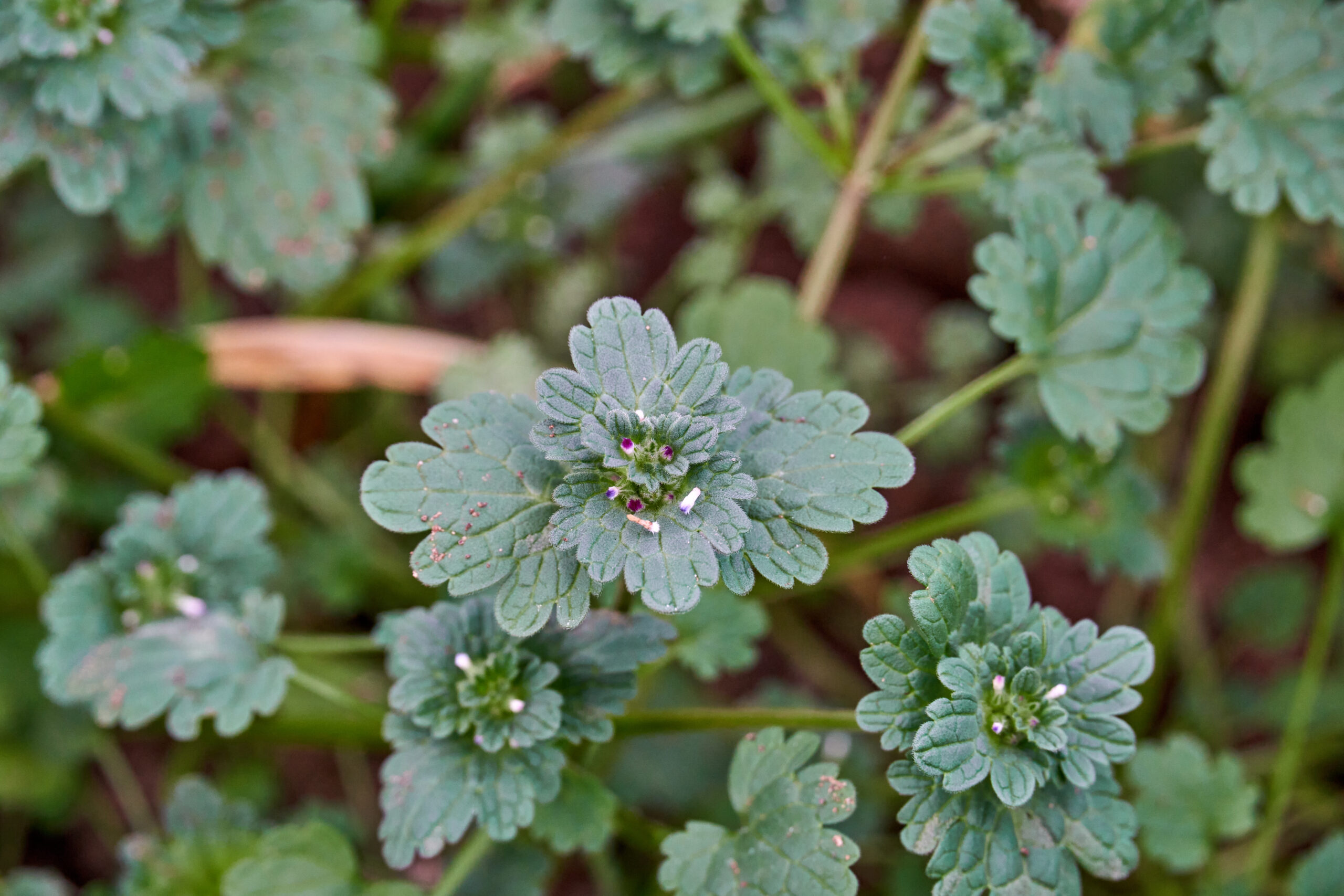
Henbit Stems
Henbit stems are squarish and covered in soft, fine hair. They’re usually green but may become more purplish, reddish, or brownish with age. Henbit stems may grow 4 to 15 inches long.
Some Henbit stems are sprawling and may lay horizontally on the ground, while others are erect. The sprawling stems may root at the lower nodes, but the plant doesn’t vigorously spread this way like some related species.
Henbit Flowers
Henbit has long pinkish-purple flowers that form in the whorls of the upper leaves. The flowers have fused petals that form an almost trumpet-shaped bloom at an upward angle. The flowers are usually 0.59–0.79 inches (1.5–2 cm) long.
Each flower has a hood-like upper lip and a two-lobed lower lip that hangs down. The flowers are hairy inside and out and have reddish spots on the inside.
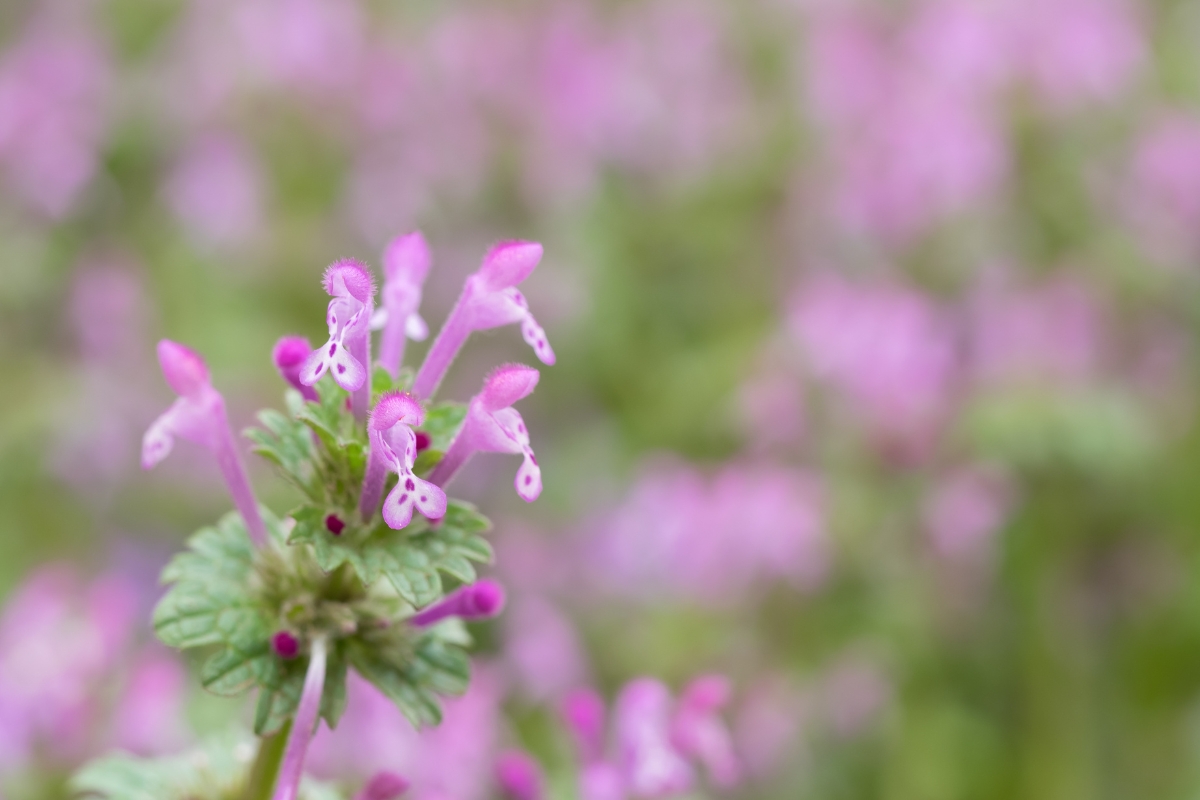
Henbit Fruits
Henbit spreads predominantly be seed. The flowers give way to little fruits that are each composed of four roughly egg-shaped nutlets. The nutlets or seeds are brown with white spots and narrower at one end than the other.
Henbit Look-Alikes
Henbit is commonly confused with Purple Dead Nettle (Lamium purpureum). However, it differs in a couple of ways:
- Purple Dead Nettle leaves are pointed and heart-shaped rather than rounded or ovate.
- Purple Dead Nettle leaves have petioles even on the flowering stems.
- Purple Dead Nettle leaves transition from green to purple-red or pinkish near the top of the stem.
- The reddish spots on Purple Dead Nettle flowers are smaller and less pronounced.
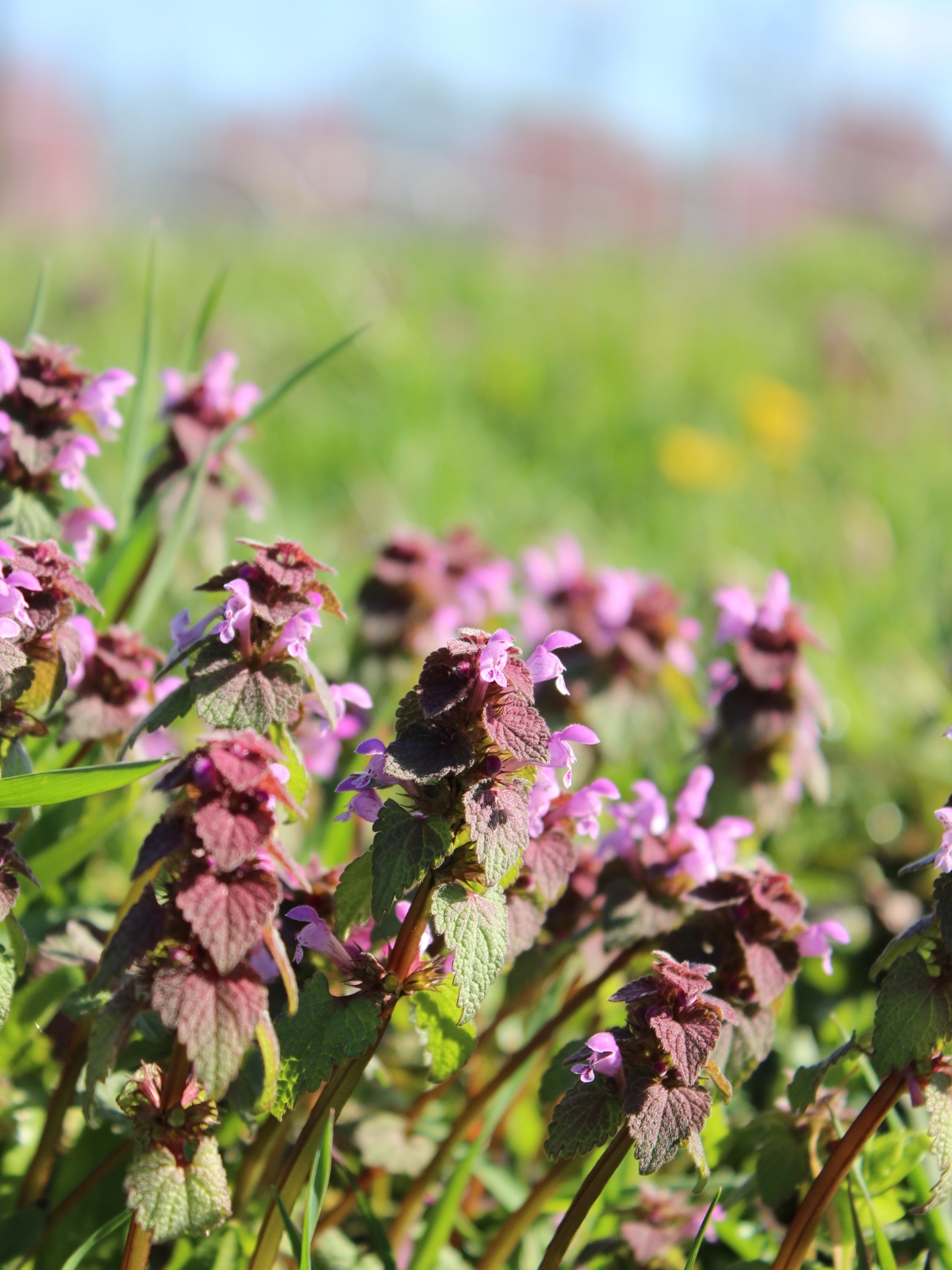
Henbit is also frequently mistaken for Ground Ivy (Glechoma hederacea). However, it too has a few easy-to-spot differences:
- Ground Ivy is perennial and may be evergreen in warm climates.
- Ground Ivy has low, creeping stems up to seven feet long that root at the nodes and tend to spread aggressively.
- Ground Ivy has round-toothed edges, but they aren’t as deeply scalloped as Henbit.
- Ground Ivy leaves are attached to the stem by petioles.
- Ground Ivy’s funnel-shaped flowers are blue or bluish-violet and lack the red spots that Henbit features.
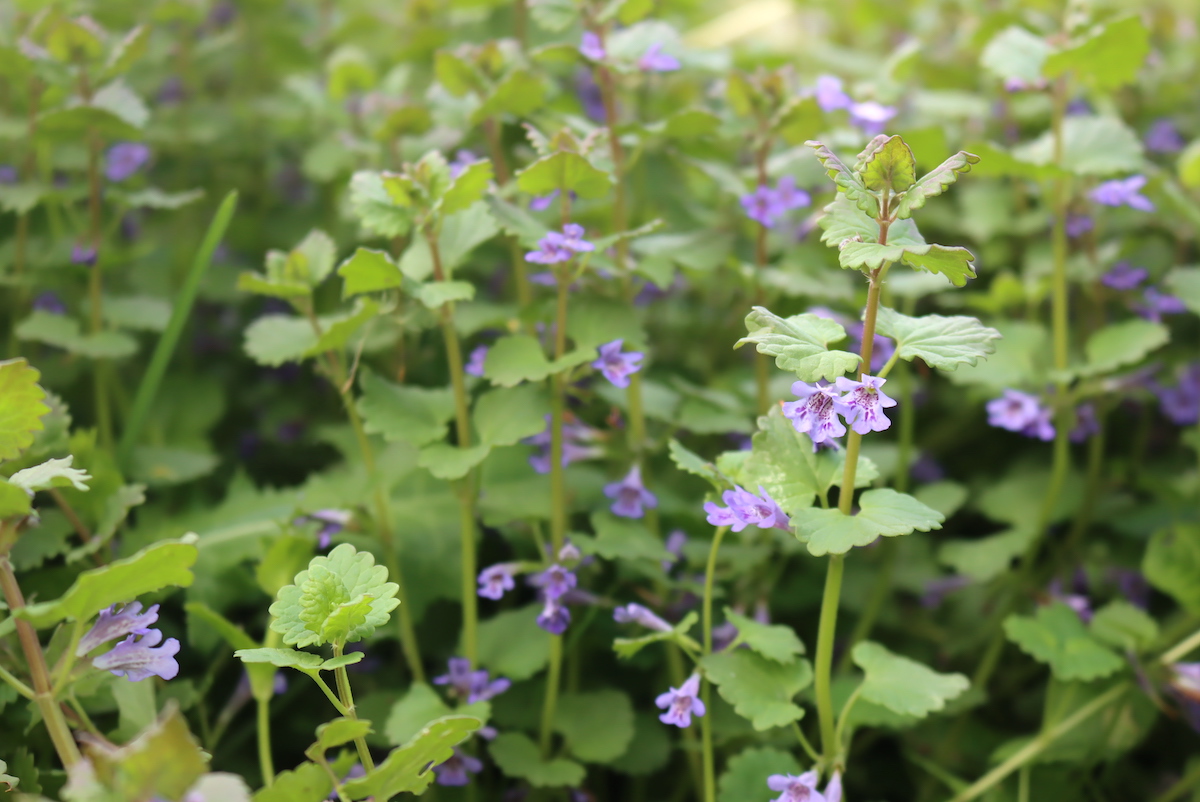
Lastly, Henbit can be confused with Creeping Speedwell (Veronica filiformis). Here are a couple of ways to distinguish them:
- Creeping Speedwell readily roots at the nodes and forms dense, spreading mats.
- Creeping Speedwell is a perennial that’s evergreen in warm climates.
- Creeping Speedwell leaves have less-pronounced, rounded teeth attached to the stem with petioles.
- Creeping Speedwell has four-lobed, bluish flowers with white centers.
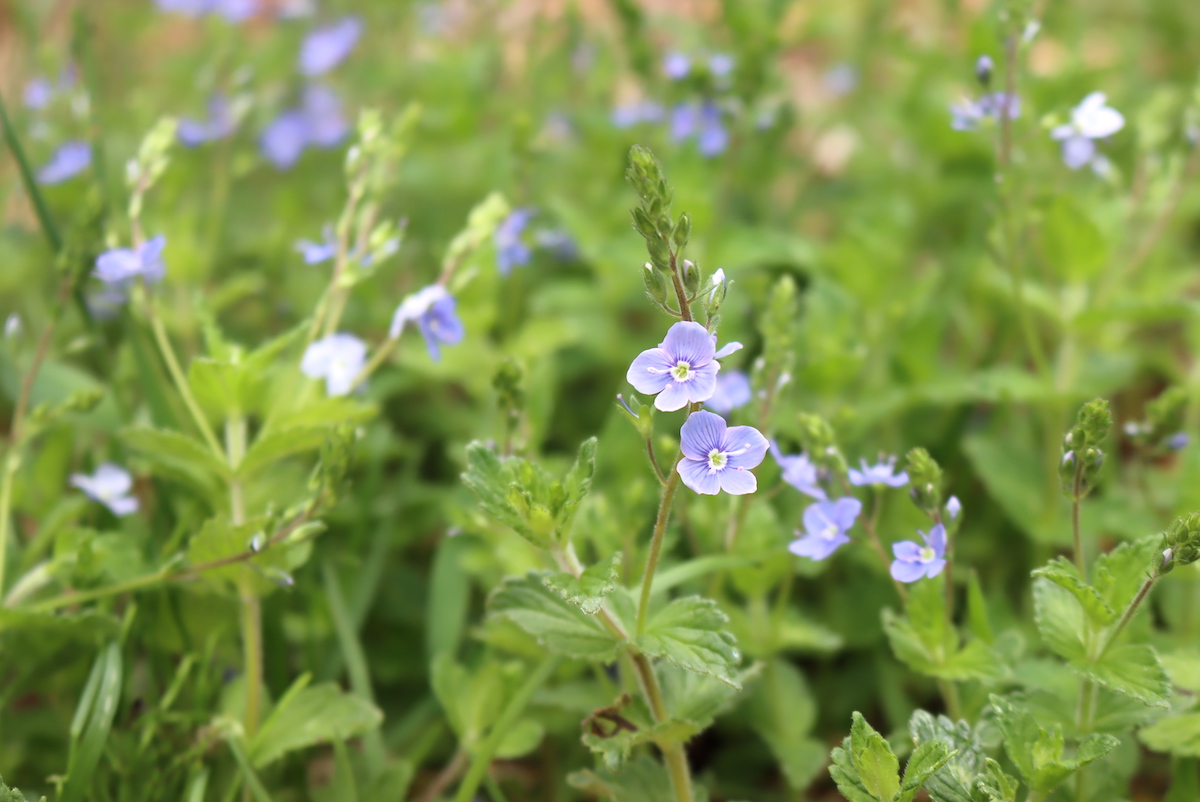
Ways to Use Henbit
Henbit is easy to use as a nutritious green, raw or cooked. It has a mild, slightly peppery flavor, and some foragers find it tastes a bit like celery. It can be used in almost any recipe that calls for greens, though some people find the hairy leaves turn them off in raw applications. Try adding Henbit to salads, smoothies, juices, sandwiches, casseroles, stir-fries, pasta dough, sauces, soups, or stews.
Their flowers and leaves also make beautiful garnishes or natural decorations for cakes and other confections. You can also roll butter or cheese in a few flowers and leaves to add a touch of beauty for serving at spring get-togethers.
To preserve Henbit, you can dry or freeze it. To freeze Henbit, blanch it as you would other greens like kale. Alternatively, you can pressure it can them alone or in a soup recipe that calls for greens.
Medicinally, herbalists primarily use Henbit in internal applications. You can collect Henbit leaves, stems, flowers, and seeds and make tea or tincture. You can also dry your Henbit for later use and mix it with other herbs to create your own herbal tea blends.
You can also use Henbit for topical applications. Its anti-inflammatory properties make it a good choice for quick poultices to help soothe scrapes, bee stings, and other skin irritations. You could also try adding it to lotion, soap, or salve recipes. Henbit is closely related to mint and could be substituted for mint in some of these recipes.
Henbit Recipes
- Make your own delicious and nutritious spring pasta with this Wild Herb Ravioli recipe. You can use store-bought egg roll wrappers to keep things simple or use your favorite pasta dough recipe.
- You can also try incorporating Henbit into the pasta dough itself! Mother Earth News has a tasty recipe for Henbit Noodles with Mushroom Sauce by Leda Meredith.
- Try a traditional Japanese rice porridge (nanakusa gayu) with the Tiger Corporation’s Seven Herbs Rice Pudding recipe. This porridge is easy on the stomach and nourishing!
- The Southern Forager has a couple of great recipes to help you incorporate Henbit into breakfast or dinner! Try her recipe for Henbit Flapjacks or Cannellini Bean and Henbit Soup.
- If you need some inspiration for a delicious salad, Homestyle Alchemy has you covered. Try their recipe for Pollock and Henbit Deadnettle Salad.
- Make a fun, foraged twist on classic pesto with this delicious recipe from The Foraged Foodie that includes tasty ingredients like Henbit, macadamia nuts, and asiago cheese.
Edible Wild Weeds
Looking for more edible wild weeds?
- Foraging Chickweed
- Foraging Yarrow
- Foraging Wild Violets
- Foraging Fireweed (Rosebay Willowherb)
- Foraging Marsh Marigold (Caltha palustris)
Foraging Guides
Looking for more edible wild plants to forage?
- Foraging Wild Black Cherry (Prunus serotina)
- Foraging Black Walnuts (Juglans nigra)
- Foraging Partridgeberry (Mitchella repens)
- Foraging Fiddlehead Ferns
- Foraging Ramps (Wild Leeks)
- Foraging Wild Asparagus
